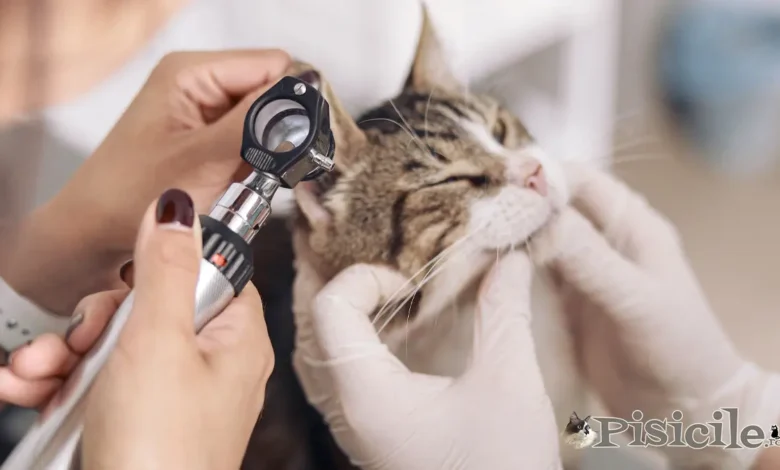
When your cat scratches his ears frequently, it's almost certain that something is wrong there. Most of the time, cats end up making wounds with their claws, trying to scratch the part of the ear that bothers them. Most often, ear mange in cats is the cause of excessive ear scratching.
Unfortunately, more than 50% of our cats face this problem. At least once in a cat's life, a coffee grounds black spot will appear in one or both ears if the cat has access to areas outside the home. This is the first sign that your cat has ear mange. You do not need to panic, because this parasite is not transmitted to humans. But you need to take urgent measures to get rid of auricular mange in the cat's ear.
Subject
Symptoms. Auricular mange in cats.
The signs that ear mites have settled in the cat's ear are very obvious. The cat begins to scratch energetically in the area of the ear affected by the parasite, wounds caused by scratching appear and hair falls out in the area of the ear, an unpleasant smell of secretions from the ear can be observed, inflammation of the ear canal appears, a black mess accumulates in the form of coffee grounds and a brown liquid can be seen on close inspection. All this, of course, also causes a state of agitation and discomfort to the cat.
What does ringworm look like?
Here are some pictures of cat ears attacked by this parasite...
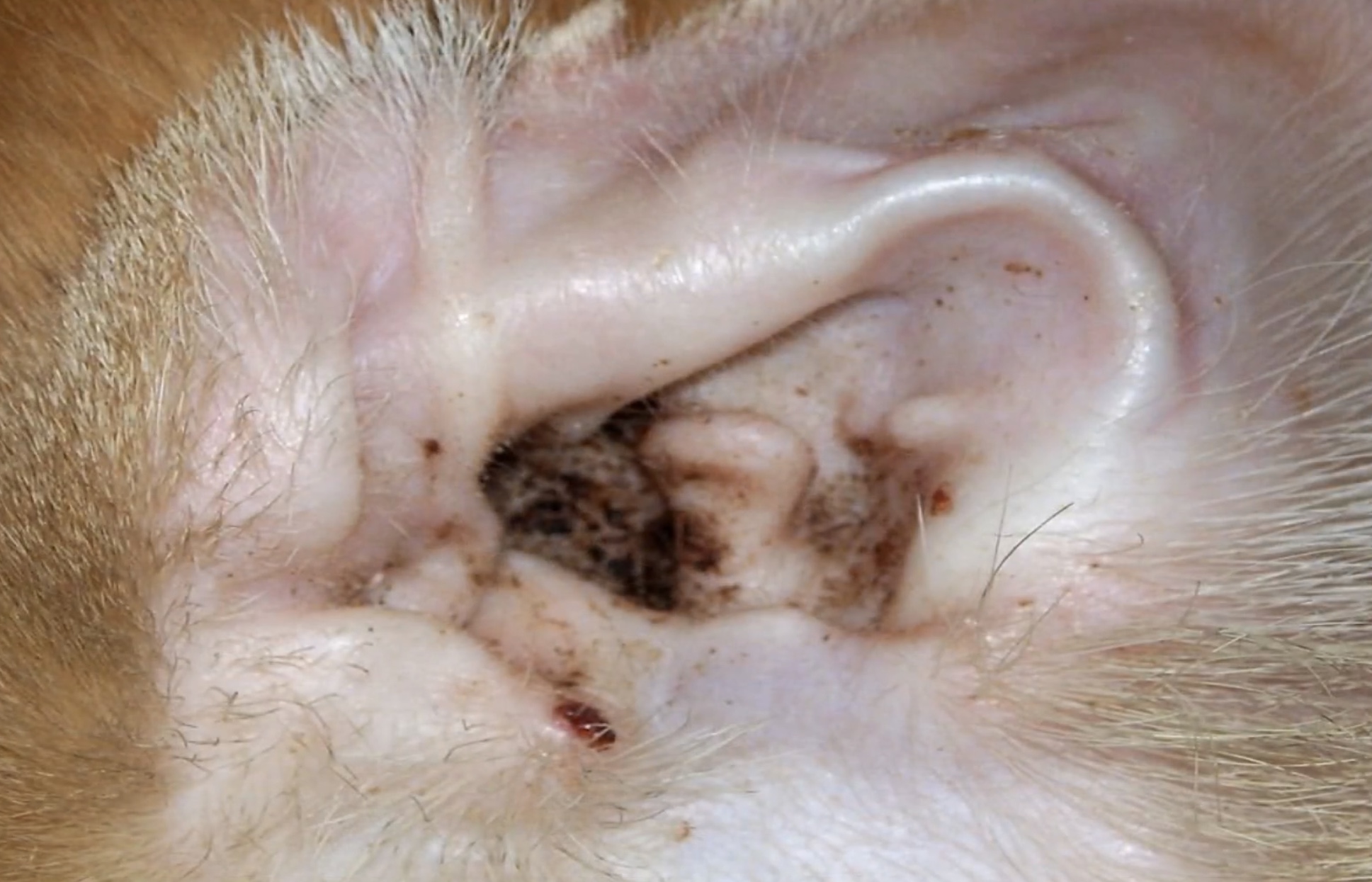
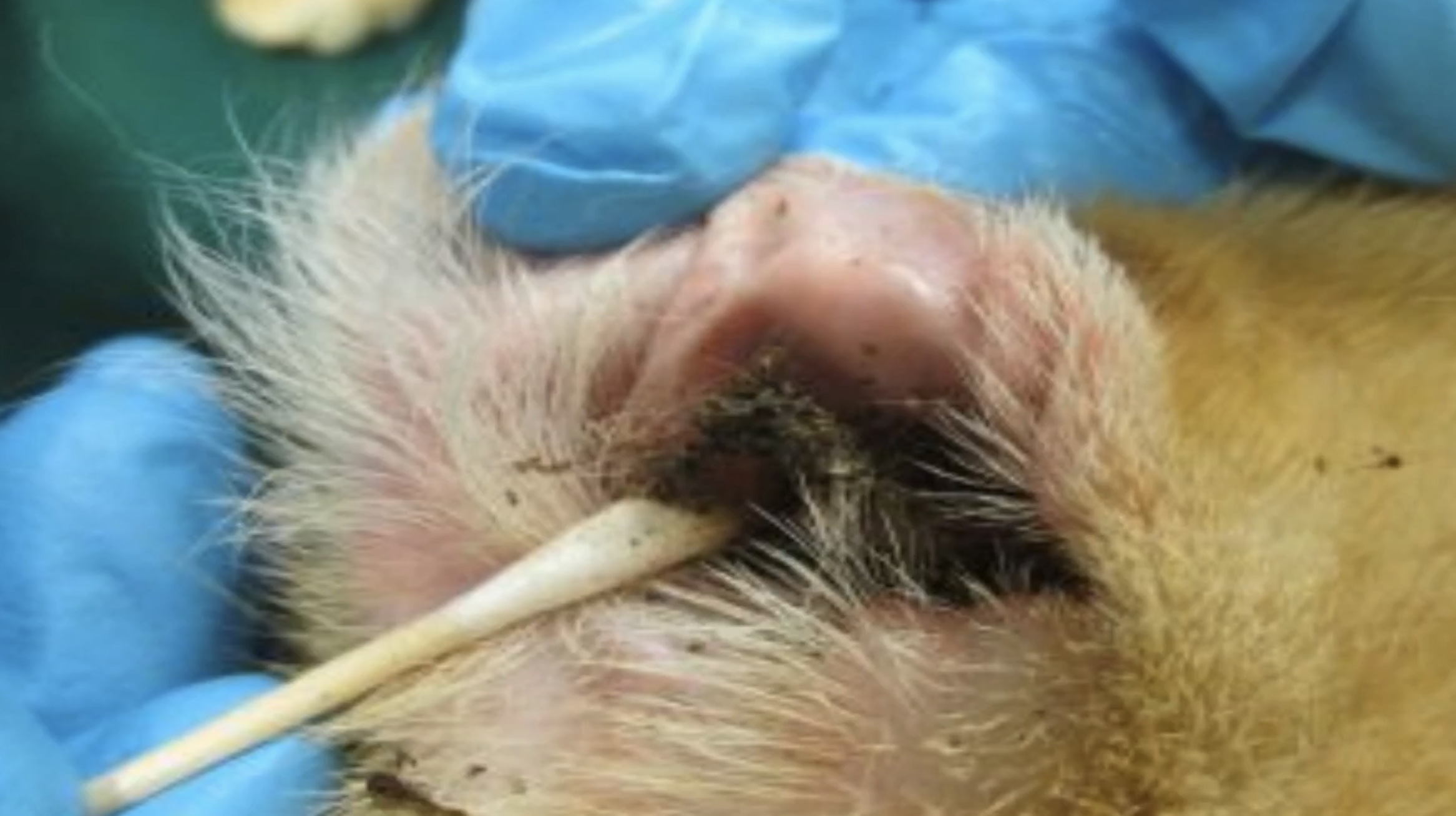
How to prevent ear mange in cats
Most of the cats that got this parasite are those that have access through the household or the front of the block. It is a very contagious parasite that is transmitted from one animal to another, just like fleas. However, cats that stay only in the house and that theoretically do not come into contact with the environment outside the home are not exempted. The parasite can be brought by the owner on clothes or shoes.
So, it is highly advisable not to let your cat touch your shoes, even though most cats are curious and smell their owners' shoes. Or the guests. On your shoes, in addition to ear mites, you can bring your cat into contact with other parasites or viruses that can endanger their health.
Diagnosis and treatment of auricular mange in cats
Auricular mange in cats can be confused by owners with chronic otitis or with other cat ear conditions. For a correct diagnosis, it is advisable to go to a veterinary office. There it will be established after a microscopic examination whether or not it is auricular scabies. This small parasite can also be seen with a magnifying glass for examination. There are also situations when the massive invasion of the parasite is visible in the form of small whitish dots in the ear area.
After the veterinarian determines that it is auricular mange, he will also indicate the best treatment. There are special drops and ointments that are applied directly to the cat's ear, but if the invasion is massive and an outbreak has occurred inside the ear, then you will need to clean the cat with ear sticks on which you previously put the substances indicated by the doctor. In some situations, the doctor can also indicate drops with antibiotics to combat the parasite. It is very important to follow the treatment for the entire period indicated by the doctor, even if the cat's ear appears clean and dewormed from ear mites. Most of the time, the treatment is done every day, for several days or even weeks, until the auricular mange in cats disappears completely.
You will not have a very happy time, neither you nor the cat. They are more energetic or aggressive cats, and ear cleaning can be an extreme sport for owners. And honestly, what would it be like to have someone stick a cotton swab in your ear and start twisting it inside out? Especially since cats' ears are much more sensitive than humans'. At the level of a cat's ear, there are many "sensors", which, in addition to better hearing than ours, help them position themselves in relation to the ground, feel the vibrations produced by sounds and air currents.
Like a "you knew that ...?", O the cat could not always fall on Without the help of ears. They "tell" them in what position they need to be and how much to rotate in the air to land.
Don't forget... Take care of your cat's ears and at the first suspicious sign, we recommend you go to a vet immediately. Most of the articles "on the net" (such as this one) have an indicative character and present possible causes and treatments of some conditions. You will only receive advice and approved treatment in a veterinary office, with the cat in your home.
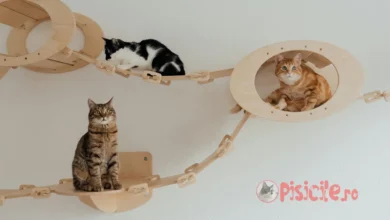

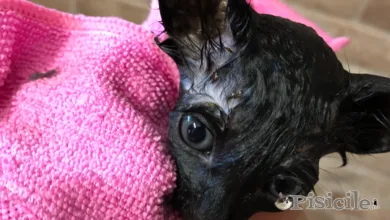

2 Comments